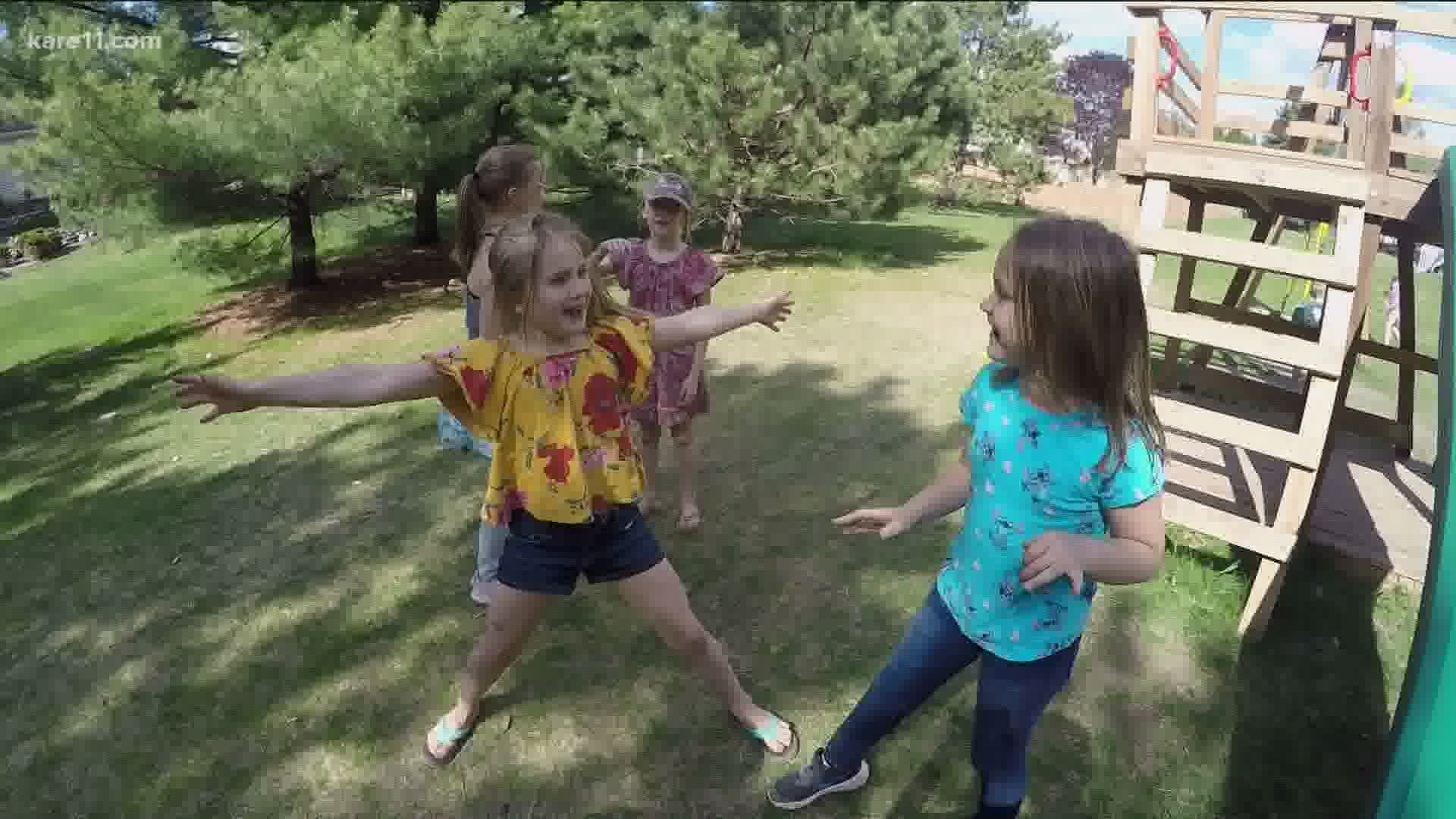COTTAGE GROVE, Minn. — On a warm May afternoon, the activity in Liz Harris' Cottage Grove backyard seemed back to what it was before the pandemic. The kids enrolled at her in-home daycare were playing a game of tag, swinging, and scrambling up the jungle gym. Harris had been fully vaccinated for some time, lifting concern that she would get sick.
But it isn't hard for her to remember when things were less certain.
"To lose over 60% of your business in the blink of an eye was very scary," she said. "We were down to six kids. We were [previously] at 14."
Like many industries, Minnesota daycares were hit hard by the pandemic. Some parents chose to pull their children when the virus hit. Some made the call over health concerns, others didn't need the care as they were working from home.
"Companies were laying off employees, which were some of my parents and that's why they had to pull their kids," Harris said.
A recent survey of 781 Minnesota providers by the Federal Reserve Bank of Minneapolis and First Children's Finance found 62% of the Twin Cities providers polled saw enrollment decrease during the pandemic. Statewide, 14% of respondents reported they closed temporarily at least once, and 23% said they used high-interest financing to get by.
"We’ve been cashing in retirement money to have a [financial] cushion," one provider told the surveyors.
"In the business of childcare enrollment equals revenue," said Suzanne Pearl, Minnesota director of First Children's Finance.
Pearl says overall the industry remained intact during the pandemic, despite fears earlier on that many providers would close due to a lack of enrollment and ensuing financial struggles. Pearl says government aid given to daycares because of the pandemic likely helped sustain them.
"But now we're kind of coming out of the pandemic back to the crisis. So there are some questions about what's next as far as the state financial support for childcare providers, whether that's going to continue," she said.
The federal government has given Minnesota $325 million, part of the American Rescue Plan Act, to help stabilize the state's child care industry. State lawmakers are still negotiating exactly how that money will be used.
For years, the state has faced a daycare shortage, felt hardest in greater Minnesota. The Center for Rural Policy and Development has been tracking the shortage. Their most recent report, released in February, shows in the Twin Cities there is a 40% gap between the availability needed and the current licensed capacity. In central and northwestern Minnesota, that gap is 56%.
Marnie Werner, Vice President of Research for the Center for Rural Policy and Development, said the problem is worse in more rural areas of the state which rely on in-home child care providers, many of whom are phasing out their daycare.
"A lot of [in-home providers] are reaching retirement age," Werner said. "There are very few people coming in behind them to replace them."
Harris soon will leave the industry, too. She said with the children at her daycare getting older, it was a natural breaking point. However, the pandemic played a role. She has three children of her own and decided she needs more financial stability.
"[The industry is] parent funded and that can be a major issue when there's a pandemic," she said.
Harris says she wants to see businesses work with the government to create solutions to the state's child care issue. She says even though she's closing her daycare, she plans to continue to advocate for the industry and try to recruit more providers.
"If you want a stable economy that is strong, you have to have childcare," she said.
If you're a parent in need of child care, visit Parent Aware's online search here. The site allows you to search licensed providers by your location.

